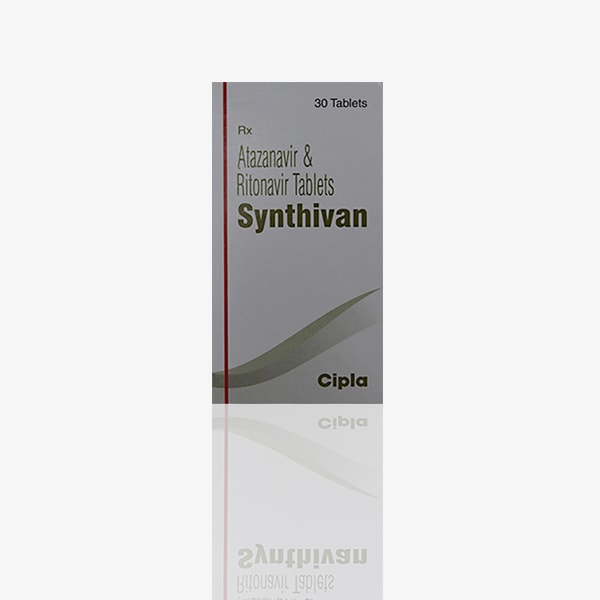

Buy Forstavir EM : Emtricitabine & Tenofovir Tablets Online
$43.56
Brand Name : Forstavir EM
Composition : Emtricitabine & Tenofovir DF
Manufactured by : Aurobindo Pharma Ltd.
Strength : Emtricitabine 200 mg and Tenofovir 300 mg
Form : Tablets
Packing : Pack of 30 Tablets
Prescriptin Required *

Buy Forstavir EM : Emtricitabine & Tenofovir Tablets Online
$43.56
- Description
- Reviews (0)
Description
Introduction
Forstavir EM is a combination medication containing Emtricitabine and Tenofovir, two potent antiretroviral agents used in the management of human immunodeficiency virus (HIV) infection. By inhibiting the replication of the virus and reducing its spread in the body, Forstavir EM plays a crucial role in suppressing HIV activity and improving immune function. This description aims to provide a comprehensive overview of the characteristics, clinical applications, and considerations associated with Forstavir EM tablets.
Mechanism of Action
- Emtricitabine: Emtricitabine is a nucleoside reverse transcriptase inhibitor (NRTI) that works by blocking the action of HIV reverse transcriptase, an enzyme essential for viral replication. By incorporating itself into the viral DNA chain, Emtricitabine terminates the elongation of the DNA strand, preventing the formation of new viral particles.
- Tenofovir: Tenofovir is a nucleotide reverse transcriptase inhibitor (NtRTI) that also targets HIV reverse transcriptase. It inhibits the enzyme’s activity by competing with natural nucleotides, leading to chain termination and inhibition of viral replication.
Clinical Applications
Forstavir EM is primarily indicated for the treatment of HIV-1 infection in adults, adolescents, and pediatric patients weighing at least 35 kg. It is often used as part of combination therapy with other antiretroviral medications to achieve and maintain viral suppression, reduce the risk of disease progression, and improve overall immune function. Forstavir EM may also be prescribed as pre-exposure prophylaxis (PrEP) in individuals at high risk of acquiring HIV infection.
Dosage Forms and Administration
Forstavir EM is available in the form of oral tablets, with each tablet containing a fixed-dose combination of Emtricitabine (200mg) and Tenofovir disoproxil fumarate (300mg). The recommended dosage regimen is typically one tablet taken orally once daily, with or without food. Dosage adjustments may be necessary in patients with renal impairment or other medical conditions.
Characteristics and Considerations
- Viral Suppression: Forstavir EM, as part of combination antiretroviral therapy, helps achieve and maintain viral suppression by inhibiting HIV replication. This reduces the viral load in the blood, slows disease progression, and preserves immune function.
- Adherence to Therapy: Adherence to the prescribed dosing regimen is crucial for the effectiveness of Forstavir EM therapy. Missed doses can lead to suboptimal viral suppression and the development of drug resistance.
- Renal Monitoring: Regular monitoring of renal function is recommended during Forstavir EM therapy, as Tenofovir can cause renal toxicity in some patients. Adjustments to the dosing regimen may be necessary in individuals with impaired renal function.
- Bone Health: Long-term use of Tenofovir has been associated with decreased bone mineral density and an increased risk of fractures. Healthcare providers may recommend monitoring bone health and supplementation with calcium and vitamin D as needed.
- Drug Interactions: Forstavir EM may interact with other medications, including certain antacids, anticonvulsants, and drugs that affect renal function. Healthcare providers should review patients’ medication lists to identify potential interactions and adjust treatment accordingly.
Conclusion
Forstavir EM, featuring a combination of Emtricitabine and Tenofovir, stands as a cornerstone in the management of HIV infection. Its potent antiretroviral activity, convenient once-daily dosing, and favorable safety profile make it an essential component of combination therapy for HIV-infected individuals. As with any antiretroviral regimen, the use of Forstavir EM involves careful consideration of individual patient factors, ongoing monitoring, and adherence to therapy. Through its contributions to HIV treatment and prevention, Forstavir EM plays a vital role in improving patient outcomes and reducing the global burden of HIV/AIDS.
Be the first to review “Buy Forstavir EM : Emtricitabine & Tenofovir Tablets Online” Cancel reply
Related Products
Buy Abamune : Abacavir Sulfate 300 mg Tablets Online
Total Sales: 0
SKU: 322323
Buy Atazor : Atazanavir 200 mg Capsules Online
Total Sales: 0
SKU: 243163
Buy Duovir : Lamivudine & Zidovudine Tablets Online
Total Sales: 0
SKU: 115222
Buy Efavir : Efavirenz 600 mg Tablets Online
Total Sales: 0
SKU: 333247
Buy Synthivan : Atazanavir & Ritonavir Tablet 30'S Online
Total Sales: 0
SKU: 968956








Reviews
There are no reviews yet.